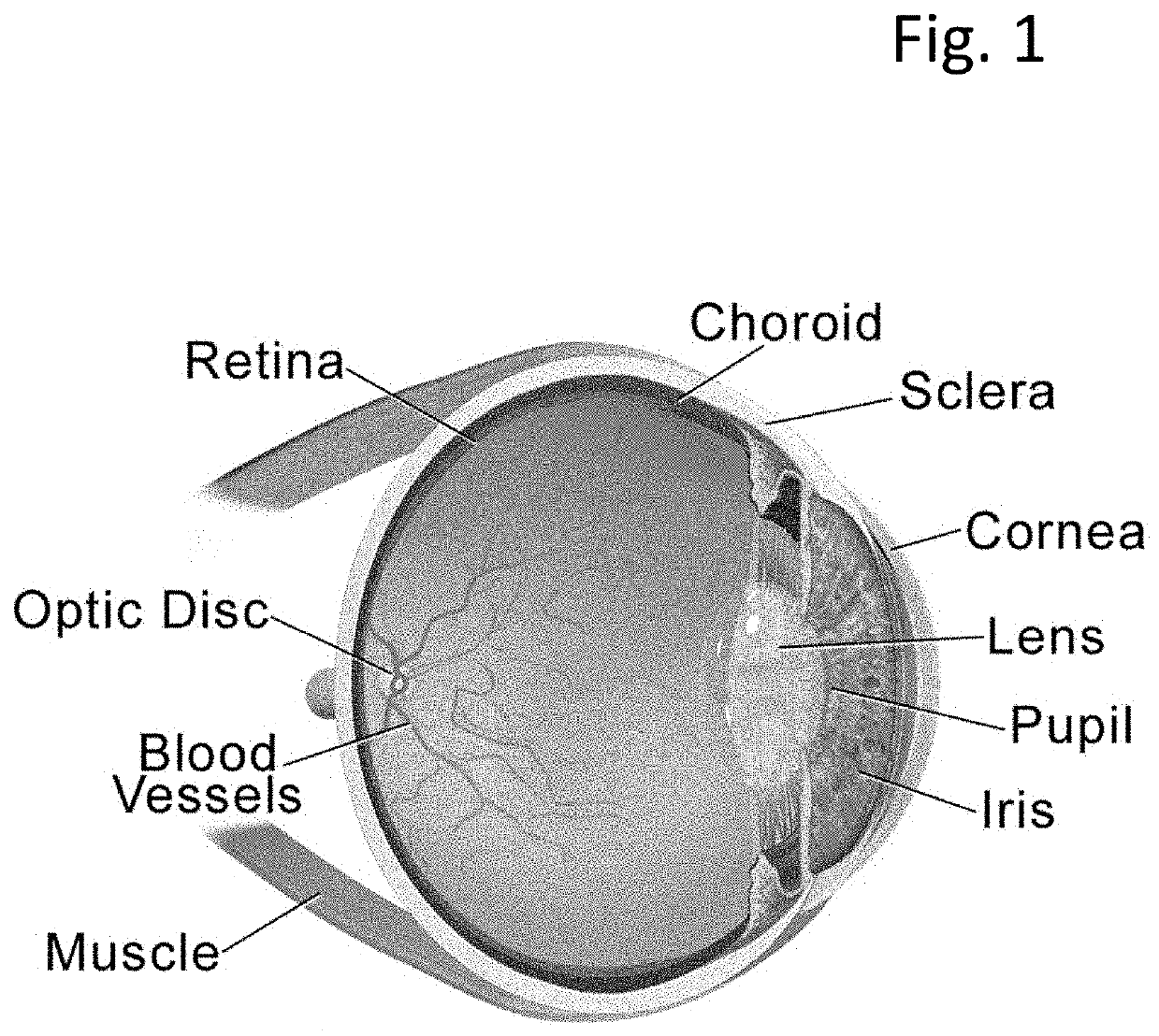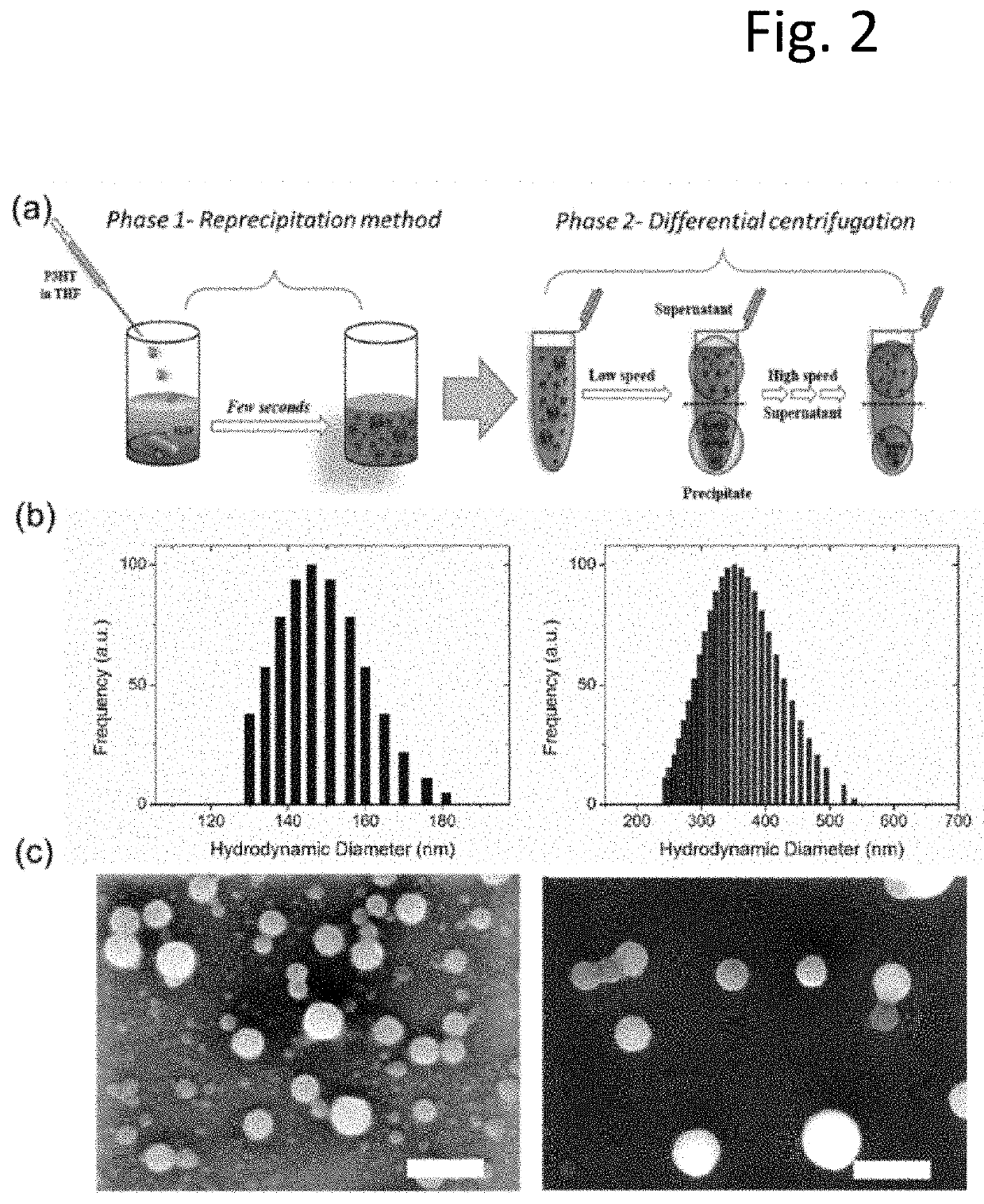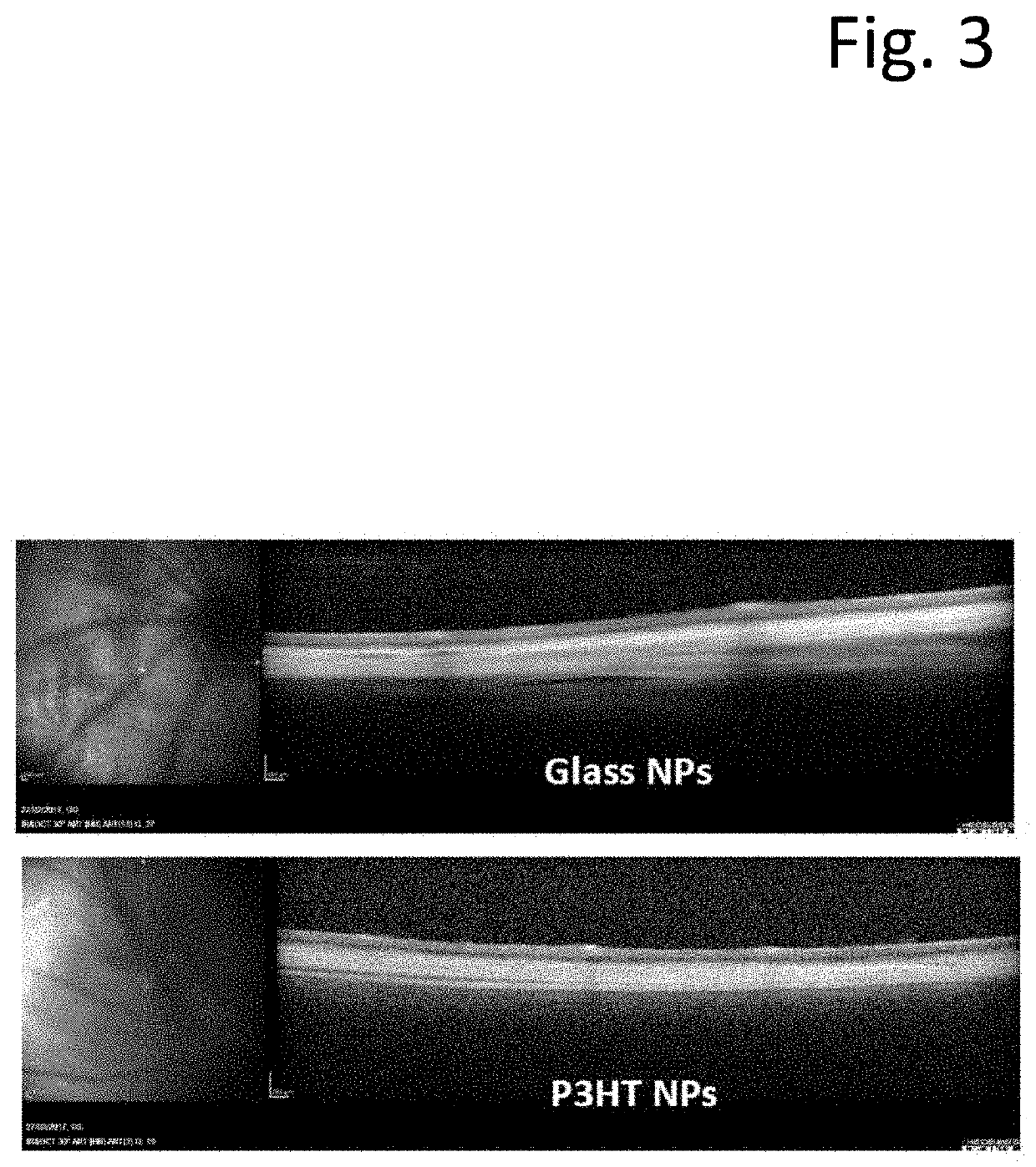Eye-injectable polymeric nanoparticles and method of use therefor
a polymer nanoparticle and eye-injection technology, which is applied in the field of eye-injection polymer nanoparticles and the method of use therefor, can solve the problems of affecting the treatment of the vast majority of amd cases, affecting the spatial resolution of at least one eye, and blurring of the image results received
- Summary
- Abstract
- Description
- Claims
- Application Information
AI Technical Summary
Benefits of technology
Problems solved by technology
Method used
Image
Examples
examples
[0118]NPs Preparation
[0119]P3HT-NPs are prepared from pre-formed poly-(3-hexylthiophene). P3HT is synthesized by oxidative polymerization of 3-hexyl-thiophene with ferric chloride. Repeated preparations are highly reproducible in the characteristics of the polymer, namely regio-regularity (as estimated from 1H-NMR), polydispersity, and spectroscopic features. The polymer displays good solubility in common organic solvents. The NPs are obtained from freshly prepared P3HT using the reprecipitation technique (solvent displacement method). No surfactants are employed and the whole process is carried out under sterile conditions using a laminar flow hood, sterilized laboratory glassware and water. Differential centrifugation, carried out employing sterilized centrifuge tubes, allows separating NPs into fractions of different size. Two fractions are selected, characterized by two different hydrodynamic diameters (HD, 148±18 nm and 344±60 nm) and low polydispersity indexes (PDI, 0.015 and ...
PUM
| Property | Measurement | Unit |
|---|---|---|
| Diameter | aaaaa | aaaaa |
| Electric potential / voltage | aaaaa | aaaaa |
| Wavelength | aaaaa | aaaaa |
Abstract
Description
Claims
Application Information
 Login to View More
Login to View More - R&D
- Intellectual Property
- Life Sciences
- Materials
- Tech Scout
- Unparalleled Data Quality
- Higher Quality Content
- 60% Fewer Hallucinations
Browse by: Latest US Patents, China's latest patents, Technical Efficacy Thesaurus, Application Domain, Technology Topic, Popular Technical Reports.
© 2025 PatSnap. All rights reserved.Legal|Privacy policy|Modern Slavery Act Transparency Statement|Sitemap|About US| Contact US: help@patsnap.com



